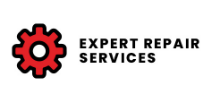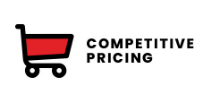5 Step Scale Calibration Guide
Posted by Ben M on Apr 24th 2018
When precision matters, a scale that is out of tolerance can cause loss of profits, regulatory fines and at the very least, huge headaches. Consistently checking and calibrating your weighing scales is important to avoid some or all of these problems and often times is a quick task. Here is a 5 step guide that covers the basics of calibrating a scale.
1. Visual Check
The first thing to do is verify that the scale or balance will turn on and that the scale is safe to test. Make sure the weight display powers up properly, the keypad functions correctly, the power cord doesn't have any exposed wires and the frame that supports the scale doesn't have any structural defects. Any of these things would be a cause for concern that it cannot be safely or properly tested. Once you've completed the visual check and everything is good to go, level the scale and verify it is sturdy.
2. Choose Test Weights
Once the scale is ready to go, you'll need to determine the appropriate test weights (also called calibration weights) to use for the calibration. The test weights used for the calibration need to be of proper accuracy and weight values. Generally, it is recommended that the accuracy of the test weights be at least equal to 1/3 the readability of the scale. Ideally several test weights of various weight values should be available for the test. Test weight values should cover the range of use of the scale. To make it easier, many manufacturer's provide the types of test weights you should use for calibration. Refer to your user manual or contact us if you need some help.
3. "As found" Test
The third step is to test the scale using test weights of a known value. Every scale is different and requires various steps to access the menu and perform the calibration. Some are as simple as pressing a single key on the keypad. If you aren't sure how to select the calibration menu on your scale, try reference the owner's manual.
The scale should be tested at multiple test points in an increasing and a decreasing manner. The more test points there are the easier it is to determine how well the scale is performing. Where applicable, a corner load or shift test should be included in the "as found" test. The weight value used for the corner load test is normally about 25% to 35% of the capacity of the scale. In instances where the scale capacity is very large, such as a vehicle scale, a much lower weight load is used. Compare the test results to the allowable tolerances to determine if the scale needs to have its calibration adjusted.
4. Preventative Maintenance and Adjustments
Next, perform any necessary preventive maintenance procedures and adjust the calibration where necessary. In many cases this includes checking under the weigh pan for debris, wiping down the keypad, housing and display. For mechanical scales, this may include cleaning and lubricating pivot points. Regarding adjusting the calibration of a scale; instructions for making adjustments are found in the manufacturer's manuals.
5. "As Left" Test
The "as left" test should be identical to the "as found" test. Use the same increasing/decreasing test points and corner load test weight values as were used in the "as found" test. Compare the test results to the allowable tolerances to determine if the scale's calibration has been properly adjusted.This will serve as the final test results for your calibration and inspection process.
Conclusion
Calibrating scales is important to maintain accuracy and quality standards. It's recommended to have experts perform routine inspections and calibrations when possible, but in between those service visits, you can perform your own simple 5 step calibration using this handy guide.
Do you have questions about calibrating scales? Are you in need of some test weights? Drop us a line! A member of the Scales Plus team will happily help.





